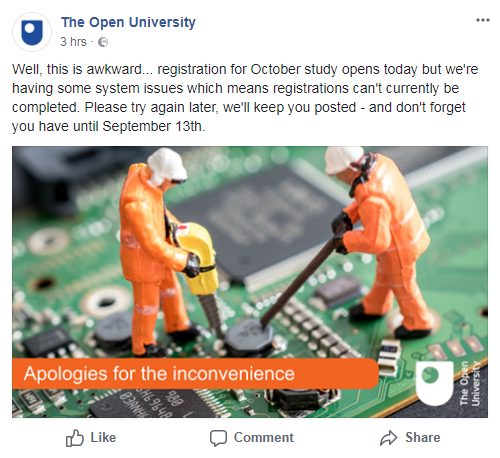For MST124, I was pleased to see that my exam form wasn’t lost due to the bureaucratic nightmare of exams forms, and I received the expected 98% for the exam. This OES goes alongside my module OCAS of 99%.
In TM129 the EMA came back at a 97%. This OES matches quite nicely to my module OCAS of … 97%.
Distinctions in both! All three Stage 1 modules, really.
Didn’t get much feedback this year. That’s fine, as I feel pretty confident with the learning outcomes of both modules.
I realised that I didn’t talk much about the TM129 EMA. It’s not accurate to say that I rushed it, but I did put it to bed pretty darned quickly. The first part was a Choose-your-own-adventure exam section, where they gave us three questions (one each for Robotics, Networking, and Linux) and we had to answer two of them. In the interest of time, I chose networking and Linux.
The networking question had two parts: A 400-word essay that pulls its information from a specific article, with other references welcome, and a prose-and-maths description of subnetting a class C IPv4 network.
The Linux question was a single 600-word essay about Internet of Things and embedded device security. It required the use of a specified article and two other sources to answer specific concerns within the essay.
I used my regular TMA methods for these questions. I think each one took about two days, though I’d read the main articles several times over a couple of weeks preceding work on the EMA.
The second part was to revise (in the American sense) two ePortfolio articles per block, using feedback from our tutor. My tutor appeared to love my ePortfolio activities and never offered any suggestions, so I just cut-and-pasted these. Job done.
And finally, there was a tragic attempt by the OU to prove value-for-money by pretending that TM129 had prepared us for the job market, and asked us to prove it by writing some CV cover-letter dross about a job posting we researched. I’m a little embarrassed for the module team being asked to create the question, but I understand the market forces that cause it. I resent market forces impacting my degree almost as much as I resent the notion that the purpose of education is employment, but it is what it is. Also, I resent the phrase “it is what it is.”
If I had to guess where my marks came off, I’d wager there were one or two taken from the network subnetting part, because I just didn’t have the patience to write down maths for converting binary. (You want me to show my workings? I put it into a calculator, like everybody else. Or sometimes I count in binary on my fingers, like all the other freaks.) I put the binary into my prose (limited to 100 words), but for “showing my mathematical workings” I just drew a pretty table with a lot of ones and zeroes. I hope another mark came off because I pasted an entire job ad, which took up two pages. I don’t think they understand what job postings look like in the Internet age when recruiters don’t have to pay newspapers for inches and ink.
I worked hard on it, but still finished it relatively quickly, and submitted it two-and-a-half months early, so I could concentrate on MST124 revision (in the UK sense).
Anyway, done until October. I’d normally be doing MOOCs right now, but I may be a bit burned out by the MST124 revision, and other stuff I’ll probably leave in another blog post soon.
